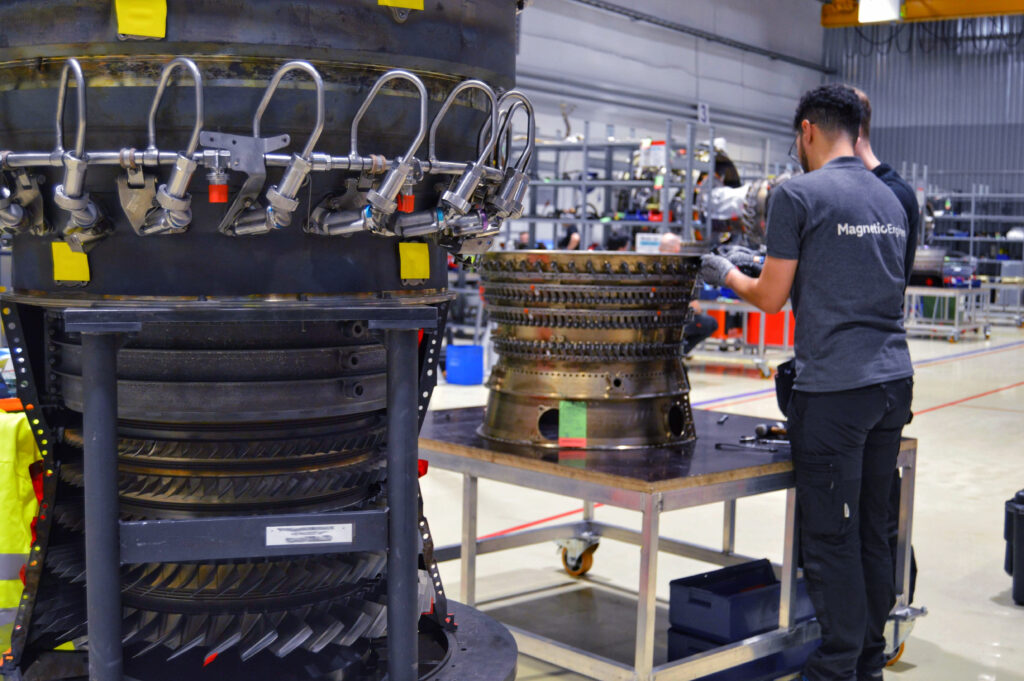Understanding the Nuances of the Southeast Asian Aviation Market

Edvinas Dubauskas, Business Development Director at Magnetic Trading
The Southeast Asia (SEA) market plays a prominent role in the global aviation market because of its geographic significance in connecting the world. Compared to other regions, It has distinct characteristics, challenges, and opportunities due to historical, geographical, economic, and cultural factors.
Let’s dive into this unique market, to better understand it and how to conduct successful business in it.
Market Size
The long-developed and historically significant European market is larger than the Southeast Asian market, but the SEA market is growing rapidly.
According to Mordor Intelligence, the Southeast Asian market size (including commercial, military and general aviation) is estimated at USD 34.40 billion in 2023 and is expected to reach USD 43.57 billion by 2028. In comparison, the European aviation market size is estimated at USD 65.85 billion in 2023 and is expected to reach USD 76.26 billion by 2028.
Although the European aviation market is nearly twice in size, the Southeast Asian market is one of the fastest growing, driven by a growing middle class, urbanization, and increasing tourism.
“Three countries from Southeast Asia – Vietnam, Thailand, and Indonesia – made the top 10 list of countries that added the most airline seat capacity since 2010,” previously said Randy Tinseth, former vice president of commercial marketing at Boeing.
“With an expanding middle-class, in a market that continues to liberalize, coupled with a strong domestic, regional and international tourism sector, Southeast Asia has become one of the world’s largest aviation markets.”
Passenger Traffic & Recovery
To further illustrate the potential of the SEA market, let’s look at projected passenger traffic.
Source: LANDSCAPE STUDY ON SOUTHEAST ASIA’S AVIATION INDUSTRY
Even based on moderate projections, the region is set to double its volume of passengers by 2040.
Now, if we reverse back to present-day passenger volume numbers, we also find some fascinating insights, especially in regards to the region’s recovery. According to OAG, Southeast Asia capacity in September 2023 is 34.9m seats, which is 17% below where it was in September 2019, but 15% up from September 2022.
Of those seats, 59% are from domestic routes, while 41% are international routes. Hanoi (HAN) - Ho Chi Minh City (SGN) made up the fourth busiest domestic route in September 2023 at 796,854 seats.
The SEA market is poised for a post-COVID breakout and will catch up quickly. Specifically, international routes will play a key role.
Business Model
Southeast Asia has a mix of full-service and low-cost carriers (LCCs) seeing tremendous growth over the past two decades. LCCs Lion Air and AirAsia make up the two biggest airlines in the market regarding seats.
SEA operates under distinct dynamics and faces unique challenges and opportunities.
Fleets & Aircraft Parts
The nature of SEA business models dictate which aircraft are ordered and how airlines construct their fleets.
According to Boeing’s most recent aircraft forecast data, Southeast Asia is expected between 2023-2042 to have airline fleet growth of 6.9% and airline traffic growth (RPK) of 9.5%. Both figures are among the highest in the world. By comparison, global airline fleet growth is projected at 3.5%, and global RPK is projected at 6.1% for the same time period.
As far as what type of aircraft are expected to be delivered in SEA between 2023-2042, the breakdown is as follows:
- Regional Jet - 45
- Single Aisle - 3,390
- Widebody - 770
- Freighter - 20
As you can see, single-aisle aircraft will make up the majority of the deliveries, accounting for 77% of the total. In comparison, single-aisle aircraft accounted for 71% of SEA’s total fleet.
Business jets remain a small part of the aviation market, as they are mostly registered (64%) in North America, followed by Europe, while SEA only accounts for a fraction.
In SEA, there are less aftermarket suppliers, less readily available parts and everything is geographically further compared to regions such as Europe.
Specifically, consumables and expendables are more difficult to procure in SE Asia, especially when faced with AOGs. As the SE Asia market develops, its supply chain will have to improve with it in order to support the region’s growth.
Challenges & Advantages
Despite all signs of long-term growth, regional and international aviation in Southeast Asia is faced with a unique set of challenges:
COVID-19
Specifically, The COVID-19 pandemic has had a major impact on the SE Asia commercial aviation segment of the market. With the global transportation halt, social distancing norms employed strictly, and the lockdown across almost every country, the need for commercial aircraft was completely reduced, leading to a steep economic slowdown in this segment of the market.
Another notable event created from the COVID period was when grounded aircraft were cannibalized for their parts. This solved short-term problems but confounded issues in the long-term because it drove up the price of components. This was due to these cannibalized aircraft eventually needing these parts to be replaced to return to the skies to meet increasing air travel demand, while still trying to service aircraft already in use.
This created a shortage in the market, and OEMs couldn't produce these components as quickly as needed and shops couldn't fix them fast enough. This led to scarcity and airlines overpaying for parts.
Another major effect of the COVID period has been the reduction in the workforce, which has led to a labor shortage. Many MRO professionals were laid off and/or switched to a new industry because of the turbulence felt within aviation. This resource crunch is causing significant delays in component repairs.
However, the International Air Transport Association (IATA) expects passenger traffic to be restored to pre-pandemic levels by 2024, driving significant market investments and revenue influx.
Infrastructure Constraints
Many major airports in the region, such as those in Jakarta, Manila, and Bangkok, have reached or are nearing their capacity, leading to operational delays and airport congestion.
Safety Concerns
Differing Standards: Some countries in the region have historically faced challenges meeting international safety standards, leading to bans or restrictions on their airlines operating in places like the European Union.
Currency Fluctuations
SEA countries can experience significant currency volatility, impacting airline profitability, especially when purchasing aircraft or paying for services priced in foreign currencies.
Environmental Challenges
The region is prone to natural disasters, including typhoons, earthquakes, and volcanic eruptions, among others, which can disrupt airline operations.
While there are many challenges in Southeast Asia, they are not insurmountable. Like the rest of the world, SE Asia will have to navigate a fluctuating economy and environmental concerns. However, as the region’s economy and infrastructure mature, we’ll see more and better air travel taking flight.
With COVID now in the rearview mirror (fingers crossed), all projections point to a bright future for the region, which will only grow in importance in the global aviation market.
















